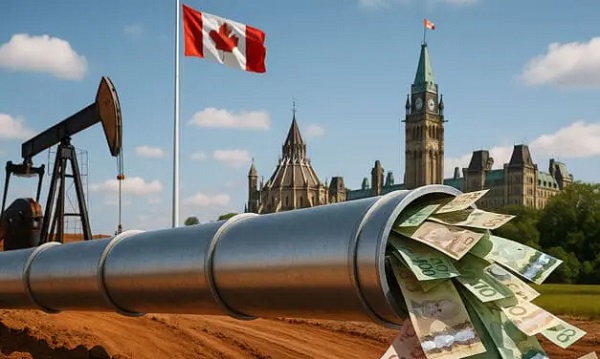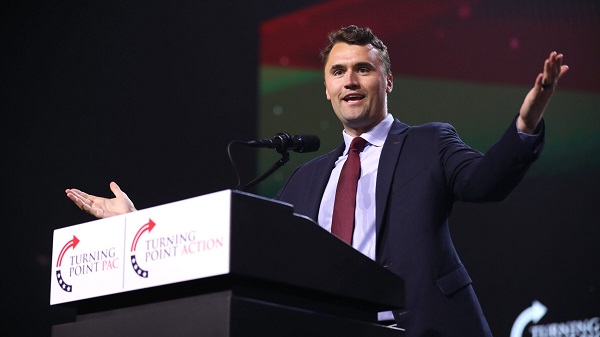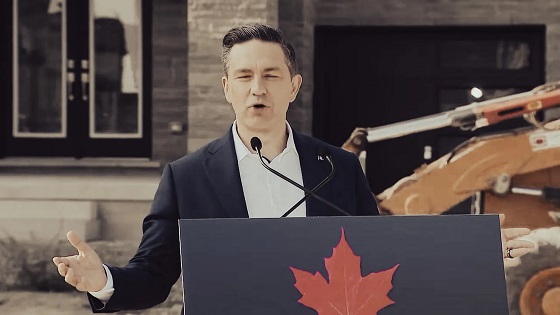Alberta
$1,200 Covid payment for 76,500 more Albertans including truck drivers, janitors, taxi drivers, security guards, farm workers, etc

More Albertans to receive $1,200 Critical Worker Benefit
76,500 more workers to receive a one-time payment to recognize the risks they have taken to support Albertans and the economy.
The Critical Worker Benefit is a joint federal-provincial program with $465 million available to recognize the hard work of critical workers during the pandemic.
During the first round of the Critical Worker Benefit Alberta’s government provided $1,200 payments to over 277,800 workers in the healthcare, social services, education and private sectors who deliver critical services to Albertans or support food and medical supply chains.
Workers in new job categories will be eligible for the same $1,200 payment. This includes workers in social services and the private sector who provided critical services to Albertans, were essential to the supply and movement of goods, and faced greater potential risk of exposure to COVID-19 through their work environments.
To be eligible for the benefit, employees must have worked a minimum of 300 hours during the period of Oct. 12, 2020 to Jan. 31, 2021. Support staff working in licensed child care must have worked a minimum of 243 hours during this period.
Eligible social services sector employers do not need to apply. Employers of support staff working in licensed child care programs, disability support workers providing independent living supports, respite, community access, and employment supports, and front-line workers in seniors-serving organizations and non-profit affordable housing providers will be contacted by the Government of Alberta to confirm details.
Eligible private sector workers making $25 per hour or less will also qualify for the benefit. These workers include: truck drivers, farmworkers, security guards, cleaners, funeral workers, employees at quick service and dine in restaurants and taxi drivers who can demonstrate they worked at least 300 hours during the eligibility period. The complete list of eligible workers for this phase of the program are available in the Application Guidelines for the private sector at alberta.ca/
Private sector employers can apply on behalf of employees at alberta.ca/
Employers will be responsible for distributing the $1,200 Critical Worker Benefit to their eligible employees.
Alberta’s government is responding to the COVID-19 pandemic by protecting lives and livelihoods with precise measures to bend the curve, sustain small businesses, and protect Alberta’s health care system.
Quick facts
- Alberta’s government contributed $118 million to the $465 million program.
- A total of about $367 million has been spent on about 289,800 workers.
- $355 million has been spent on about 277,800 workers in the phase one of the Critical Worker Benefit. This includes social services workers, health care workers, education workers and critical private sector workers, such as grocery cashiers, pharmacy assistants, and gas station attendants.
- Announced in April 2020, Alberta also used $12 million of the one-time federal funding along with a provincial investment totalling $30 million to date to provide a $2 an hour wage top-up for about 12,000 health care aides working in long-term care and designated supportive living facilities.
- About $99 million is available for about 76,500 workers in the social services and private sectors.
- The break down of benefit recipient is:
- Up to $18.5 million in the social services sector supporting 14,300 workers
- Up to $80.3 million in the private sector supporting 62,200 workers
Workers in the following private sector occupations are eligible to receive the Critical Worker Benefit:
- truck transportation, primarily engaged in the transportation of goods, in the following occupations:
- transport truck drivers
- light duty cleaners
- janitors, caretakers and building superintendents
- security guards and related security services
- material handlers
- dlivery and courier services drivers
- other trades helpers and labourers
- crop production, animal production or aquaculture directly involved in the production of food for human consumption
- funeral homes, cemeteries and crematoria
- not eligible: municipally-run funeral homes, cemeteries and crematoria
- security guards
- not eligible: private investigators, armoured car guard, house detective, personal bodyguards and security
- light duty cleaners, janitors and specialized cleaners working in commercial, institution and industrial locations
- not eligible: private residence cleaners
- taxi drivers
- not eligible: chauffers and drivers of ride-share companies such as Uber and Lyft
- workers in full-service restaurants and limited services eating places – workers must be primarily involved in the preparation, cooking or service delivery in an eligible establishment
- not eligible: drinking places that do not serve food onsite
Read the application guidelines for the private sector for more information.
Alberta
Equalization program disincentivizes provinces from improving their economies

From the Fraser Institute
By Tegan Hill and Joel Emes
As the Alberta Next Panel continues discussions on how to assert the province’s role in the federation, equalization remains a key issue. Among separatists in the province, a striking 88 per cent support ending equalization despite it being a constitutional requirement. But all Canadians should demand equalization reform. The program conceptually and practically creates real disincentives for economic growth, which is key to improving living standards.
First, a bit of background.
The goal of equalization is to ensure that each province can deliver reasonably comparable public services at reasonably comparable tax rates. To determine which provinces receive equalization payments, the equalization formula applies a hypothetical national average tax rate to different sources of revenue (e.g. personal income and business income) to calculate how much revenue a province could generate. In theory, provinces that would raise less revenue than the national average (on a per-person basis) receive equalization, while province’s that would raise more than the national average do not. Ottawa collects taxes from Canadians across the country then redistributes money to these “have not” provinces through equalization.
This year, Ontario, Quebec, Manitoba and all of Atlantic Canada will receive a share of the $26.2 billion in equalization spending. Alberta, British Columbia and Saskatchewan—calculated to have a higher-than-average ability to raise revenue—will not receive payments.
Of course, equalization has long been a contentious issue for contributing provinces including Alberta. But the program also causes problems for recipient or “have not” provinces that may fall into a welfare trap. Again, according to the principle of equalization, as a province’s economic fortunes improve and its ability to raise revenues increases, its equalization payments should decline or even end.
Consequently, the program may disincentivize provinces from improving their economies. Take, for example, natural resource development. In addition to applying a hypothetical national average tax rate to different sources of provincial revenue, the equalization formula measures actual real-world natural resource revenues. That means that what any provincial government receives in natural resource revenue (e.g. oil and hydro royalties) directly affects whether or not it will receive equalization—and how much it will receive.
According to a 2020 study, if a province receiving equalization chose to increase its natural resource revenues by 10 per cent, up to 97 per cent of that new revenue could be offset by reductions in equalization.
This has real implications. In 2018, for instance, the Quebec government banned shale gas fracking and tightened rules for oil and gas drilling, despite the existence of up to 36 trillion cubic feet of recoverable natural gas in the Saint Lawrence Valley, with an estimated worth of between $68 billion and $186 billion. Then in 2022, the Quebec government banned new oil and gas development. While many factors likely played into this decision, equalization “claw-backs” create a disincentive for resource development in recipient provinces. At the same time, provinces that generally develop their resources—including Alberta—are effectively punished and do not receive equalization.
The current formula also encourages recipient provinces to raise tax rates. Recall, the formula calculates how much money each province could hypothetically generate if they all applied a national average tax structure. Raising personal or business tax rates would raise the national average used in the formula, that “have not” provinces are topped up to, which can lead to a higher equalization payment. At the same time, higher tax rates can cause a decline in a province’s tax base (i.e. the amount of income subject to taxes) as some taxpayers work or invest less within that jurisdiction, or engage in more tax planning to reduce their tax bills. A lower tax base reduces the amount of revenue that provincial governments can raise, which can again lead to higher equalization payments. This incentive problem is economically damaging for provinces as high tax rates reduce incentives for work, savings, investment and entrepreneurship.
It’s conceivable that a province may be no better off with equalization because of the program’s negative economic incentives. Put simply, equalization creates problems for provinces across the country—even recipient provinces—and it’s time Canadians demand reform.
Alberta
Provincial pension plan could boost retirement savings for Albertans

From the Fraser Institute
By Tegan Hill and Joel Emes
In 2026, Albertans may vote on whether or not to leave the Canada Pension Plan (CPP) for a provincial pension plan. While they should weigh the cost and benefits, one thing is clear—Albertans could boost their retirement savings under a provincial pension plan.
Compared to the rest of Canada, Alberta has relatively high rates of employment, higher average incomes and a younger population. Subsequently, Albertans collectively contribute more to the CPP than retirees in the province receive in total CPP payments.
Indeed, from 1981 to 2022 (the latest year of available data), Alberta workers paid 14.4 per cent (annually, on average) of total CPP contributions (typically from their paycheques) while retirees in the province received 10.0 per cent of the payments. That’s a net contribution of $53.6 billion from Albertans over the period.
Alberta’s demographic and income advantages also mean that if the province left the CPP, Albertans could pay lower contribution rates while still receiving the same retirement benefits under a provincial pension plan (in fact, the CPP Act requires that to leave CPP, a province must provide a comparable plan with comparable benefits). This would mean Albertans keep more of their money, which they can use to boost their private retirement savings (e.g. RRSPs or TFSAs).
According to one estimate, Albertans’ contribution rate could fall from 9.9 per cent (the current base CPP rate) to 5.85 per cent under a provincial pension plan. Under this scenario, a typical Albertan earning the median income ($50,000 in 2025) and contributing since age 18, would save $50,023 over their lifetime from paying a lower rate under provincial pension plan. Thanks to the power of compound interest, with a 7.1 per cent (average) nominal rate of return (based on a balanced portfolio of investments), those savings could grow to nearly $190,000 over the same worker’s lifetime.
Pair that amount with what you’d receive from the new provincial pension plan ($265,000) and you’d have $455,000 in retirement income (pre-tax)—nearly 72 per cent more than under the CPP alone.
To be clear, exactly how much you’d save depends on the specific contribution rate for the new provincial pension plan. We use 5.85 per cent in the above scenario, but estimates vary. But even if we assume a higher contribution rate, Albertan’s could still receive more in retirement with the provincial pension plan compared to the current CPP.
Consider the potential with a provincial pension contribution rate of 8.21 per cent. A typical Albertan, contributing since age 18, would generate $330,000 in pre-tax retirement income from the new provincial pension plan plus their private savings, which is nearly one quarter larger than they’d receive from the CPP alone (again, $265,000).
Albertans should consider the full costs and benefits of a provincial pension plan, but it’s clearly Albertans could benefit from higher retirement income due to increased private savings.
-

 International2 days ago
International2 days agoBreaking: ‘Catch This Fascist’: Radicalized Utah Suspect Arrested in Charlie Kirk Assassination, Officials Say
-

 Crime1 day ago
Crime1 day agoFormer NYPD Inspector Shares What Family Of Alleged Charlie Kirk Assassin Feared Before Turning Him In
-

 International2 days ago
International2 days agoCharlie Kirk Shooting Suspect Revealed: Here’s What His Ammunition Said
-

 Crime2 days ago
Crime2 days agoArrest made in Charlie Kirk assassination
-

 Business2 days ago
Business2 days agoUpcoming federal budget likely to increase—not reduce—policy uncertainty
-

 Health2 days ago
Health2 days agoCanadians left with no choice but euthanasia when care is denied
-

 Crime2 days ago
Crime2 days ago‘Radicalized’ shooter dead, two injured in wake of school shooting
-

 J.D. Tuccille2 days ago
J.D. Tuccille2 days agoAfter Charlie Kirk’s Murder, Politicians Can Back Away From the Brink, or Make Matters Worse





